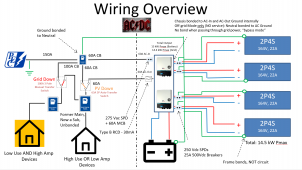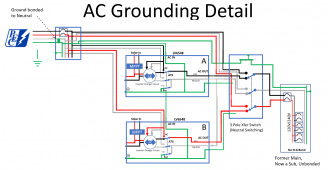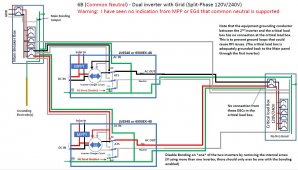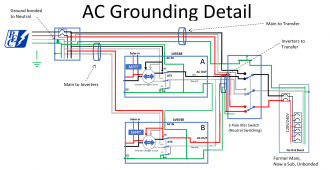Anyone want to sanity check the below? Especially the use of the Auto-Transfer switch? Also, the auto-transfer switch I've got sitting in my Ebay shopping cart says to use an under-over voltage protector with it. But, the manufacturer doesn't sell a 3 pole anything (except the switch) ... I assume I'd use a 2 pole for each of the Lines, tying the Neutrals together? Thanks much in advance for any help ...








